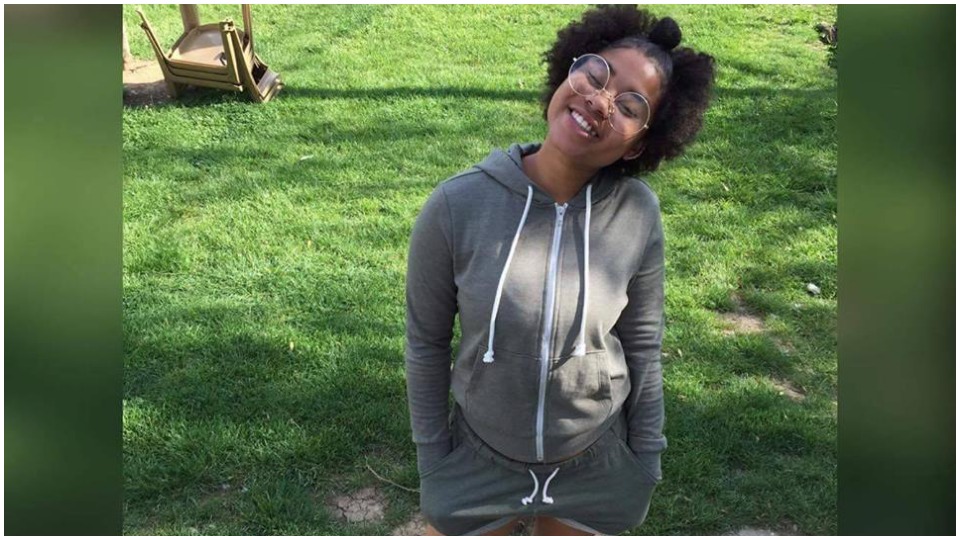
During a sting operation on December 7, 2018, Ohio teen Julius Ervin Tate, Jr., was fatally shot by police officers. Five months later, Tate’s teenage girlfriend, Masonique Saunders, pleaded guilty to manslaughter charges in his death. If the previous two sentences come off as a non sequitur, it is because Masonique is being charged for the death of her boyfriend, although it is a known public fact that the young Black woman was not the one who actually killed him.
Saunders was charged on the basis of the so-called “felony murder doctrine,” a legal loophole of sorts that may see her spending the next three years in juvenile detention, while the police officer who pulled the trigger keeps his job and freedom. Saunders’s case can be seen as yet another instance of a young Black woman being criminalized and lost in a system that leaves them vulnerable to exploitation.
According to a representative of the Columbus Division of Police, Tate was shot after he allegedly robbed an undercover officer at gunpoint during a sting operation. The operation had been set up by police using social media to arrange a transaction with Tate. The targeting of Tate was part of an effort to stop a series of recent robberies that had been taking place throughout the city of Columbus. When the undercover officer met with Tate, the teen allegedly pulled out a gun and robbed him. This was followed by SWAT team member Eric Richard shooting and killing the young man.
Police later charged Masonique with murder and aggravated robbery. They claimed the young girl’s involvement with Tate’s alleged crimes is what led to the shooting that killed him, therefore making her responsible. The officers claimed that Saunders was with Tate at the time of the robbery as his accomplice and had a handgun on her. Under the felony murder doctrine, as explained by police spokesperson Denise Alex-Bouzounis, a person is still responsible for a murder if they cause the death of another person as “an approximate result of committing certain kinds of serious offenses.”
The charge against Saunders was filed after the Tate family publicly announced on December 12 that they were considering an unlawful death suit against the officers after the family attorney said that a witness disputed the police account of the shooting. Tate family attorney, Byron Potts, said in an interview, “I have a sworn affidavit from an eyewitness that says that this was done totally different than what has been put on the news…. They [the police] shot him on the street, then came back to the house and got a gun from the house. He [Tate] did not have a gun on him at the time this [murder] happened.”
The optics of the case make it appear that when the question of police misconduct came into play, Masonique Saunders suddenly became the fall person for her boyfriend’s death.
Saunders was taken into custody on December 14, two days after the Tate family’s lawsuit was announced and after the police made Saunders’s address and past juvenile criminal history public. At the time of her arrest, Saunders’s mother and attorney Byron Potts told the news that Masonique was denying involvement in Tate’s death and asserted that Tate did not have a gun on him at the time of the shooting.
Five months later, and up against a law in place already set to condemn her, Masonique has pleaded guilty to involuntary manslaughter and aggravated robbery in order to not be charged as an adult in Tate’s murder. She now faces up to three years in prison.
Since Masonique’s arrest, there have been a number of protests demanding her freedom, led with the social media hashtag #FreeMasonique. Along with this, Saunders’s case has placed the felony murder doctrine under greater scrutiny and highlighted the individuals it negatively affects.
As of 2018, there are 45 states with felony murder rules. Of those 45 states, 24 allow for the death penalty in such cases. A 2005 study by Amnesty International and Human Rights Watch looked at over 2,200 child offenders serving life without parole for crimes committed before they turned 18. It was estimated that 26 percent were convicted of felony murder—i.e., not of having committed a murder themselves but of having been involved in a crime which resulted in a murder.
In California, where in September 2018 Gov. Jerry Brown signed Senate Bill 1437, which severely restricts felony murder in the state, a study by the Felony Murder Elimination Project found that nearly 40 percent of those convicted under the doctrine are Black, with a large number also being juveniles. A 2018 survey found that 72% of women serving a life sentence for felony murder in California did not commit the homicide. The statistics in California of what happens when felony murder is enforced can be seen as a microcosm of the larger national impact of this rule.
Masonique Saunders fits all three categories: woman, youth, African American. Black girls are 14% of the general population nationally, but 33.2% of the girls who are detained and committed in juvenile justice systems.
On May 9, the Coalition to Free Masonique Saunders issued a statement asserting: “Prosecutor Ron O’Brien bullied this teenager into accepting charges for a murder that Officer Eric Richard committed. This is one of many instances of the racist, classist carceral system pressuring Black people into needlessly accepting punitive measures. By scapegoating her and disappearing her behind bars, Ron O’Brien has allowed another killer cop to evade accountability.” The coalition also announced that it would be taking steps to get officer Eric Richard fired from his position in law enforcement.
Painted publicly as a criminal, undeserving of protection and justice, Masonique may turn into another statistic under a law, and a system, that disproportionately negatively affects the communities to which she belongs. Like countless other Black women and girls before her, Masonique’s story is not an isolated case, but rather represents the criminalization of the most vulnerable and exploited women in our society.
For more information on the Coalition to Free Masonique Sanders, visit their website.
Like free stuff? So do we. Here at People’s World, we believe strongly in the mission of keeping the labor and democratic movements informed so they are prepared for the struggle. But we need your help. While our content is free for readers (something we are proud of) it takes money — a lot of it — to produce and cover the stories you see in our pages. Only you, our readers and supporters, can keep us going. Only you can make sure we keep the news that matters free of paywalls and advertisements. If you enjoy reading People’s World and the stories we bring you, support our work by becoming a $5 monthly sustainer today.












Comments